Suburbia is a game that was created a decade ago, although the first Polish version appeared only a year later. Some of them have already dealt with this board game, but – as it often happens – new players rarely return to titles published a few / a dozen years earlier, so they may miss some pretty good games. That is one of the reasons why I am glad that publishers are deciding to re-release older and often sold out board games. After the new version of Basilica has recently appeared , Portal Games has decided to make players happy with the re -edition of Suburbia .
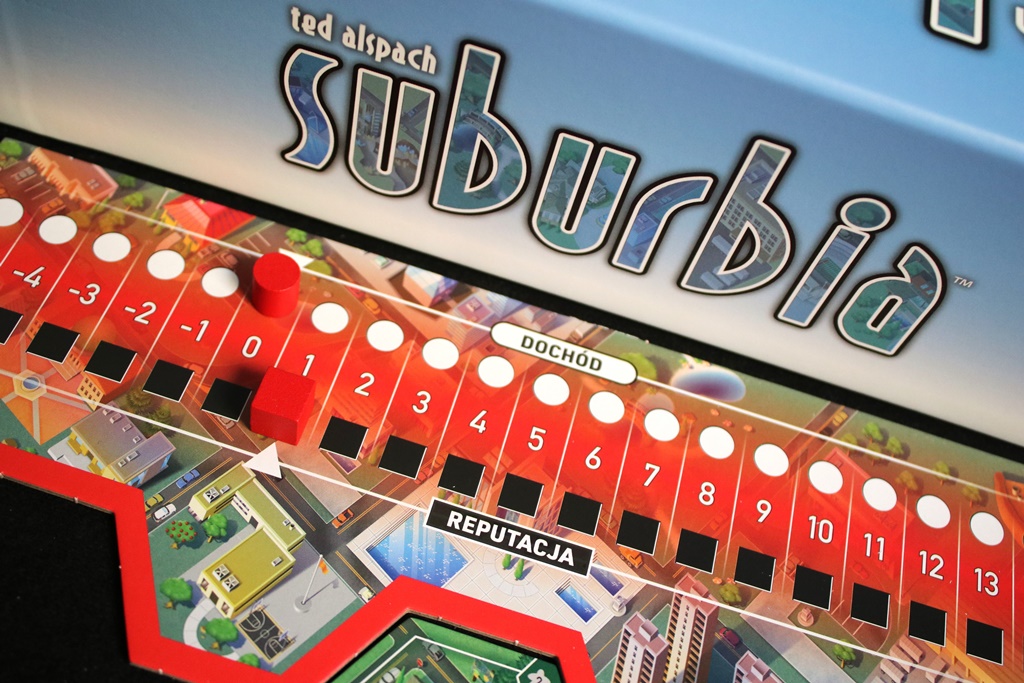
Foundations first
Each takes components of their color – the district board, three investment tokens, rules abbreviation, and wooden markers for population, reputation, and income, which are placed on the appropriate tracks. Players also receive fifteen coins and two goals from which they choose one, as well as starting tiles – i.e. the factory, suburbs, and city park – from which they will start building their district.
Place the population and market boards in the center of the table. On the latter, place the shuffled tiles A, B and C with the lake side facing up and place the seven hexes from the first group below. In the last pile there is a tile that triggers the end of the game. There are four more random Common Objective tokens in the center, and nearby factories, suburbs, and city parks, which can be purchased regardless of what is available in the market.
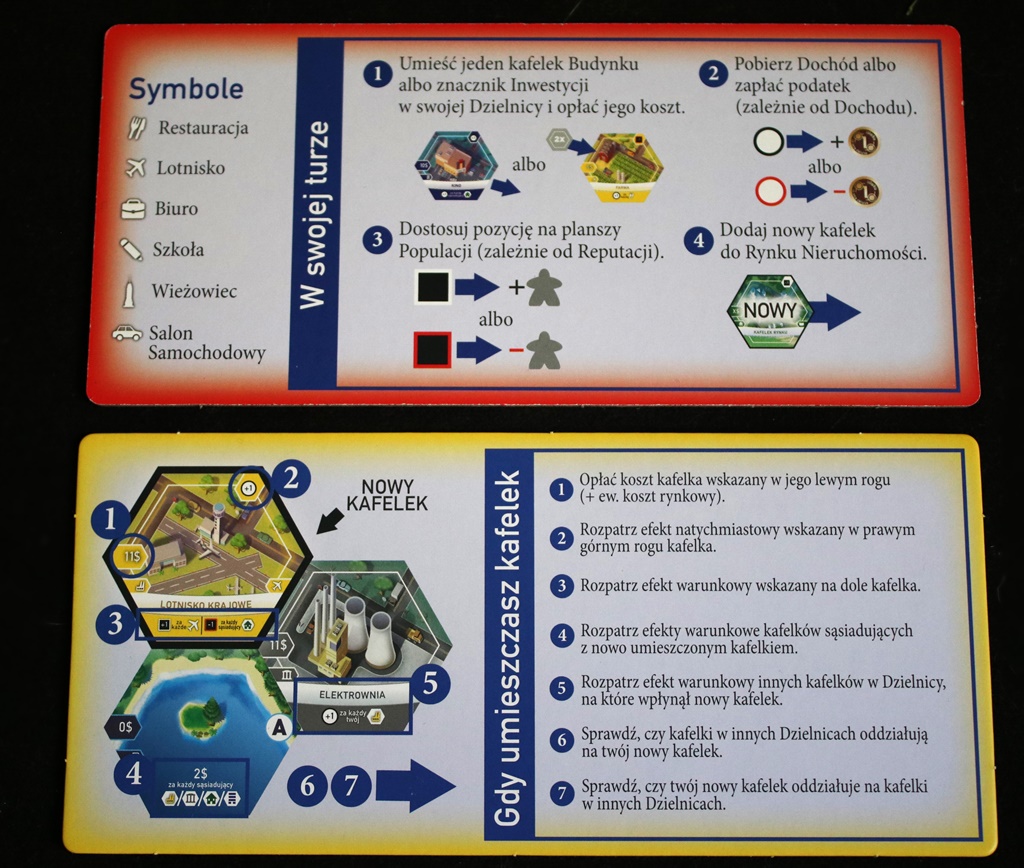
During your turn, you can take a basic or market tile by paying the cost indicated on the tile and the amount above the hex. We put it in our neighborhood and we get and / or lose what’s on it. We can move on the tracks of population, income or reputation, but unfortunately not always forward. Sometimes we have to place a marker on a space lower than before. We also get money and permanent profits. If we do not like any of the available buildings, we can place an investment token on one of the already built ones to gain benefits from it again.
Finishing and embellishment
The simplicity of Suburbia is its great asset. Taking a tile, money from the income track, and moving the population marker are all we do on our turn. After each move, a new board is placed on the market, so there are still various expansion options. This is why, despite the simple rules, the gameplay is so addictive.
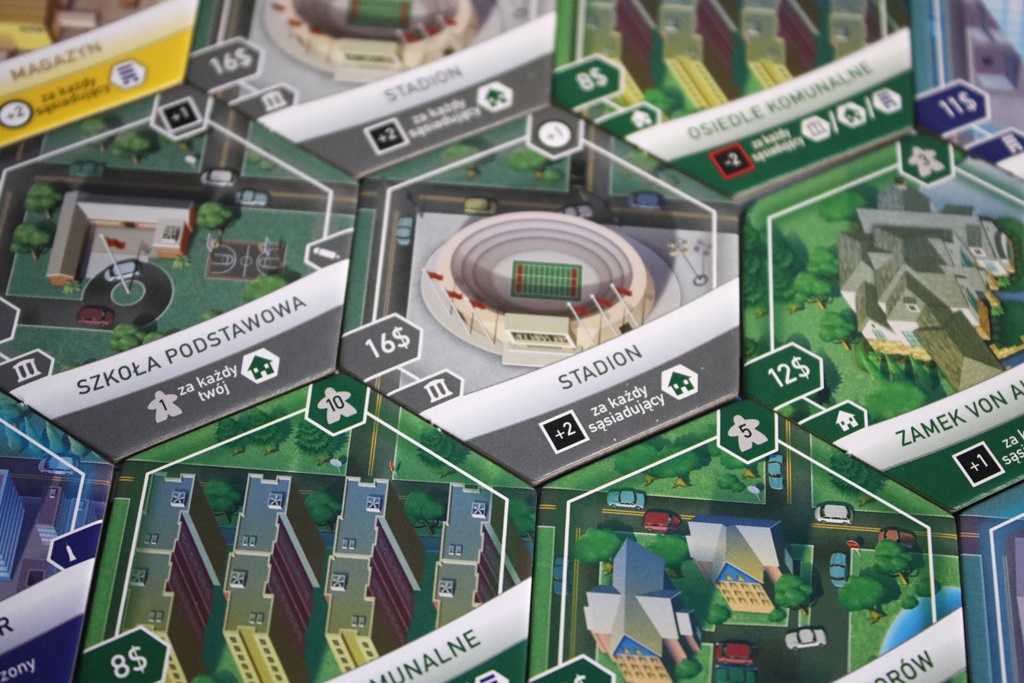
The most important decisions are not always those related to the purchase of a new building. It is much more difficult to properly place them in a district, because most often it depends on the adjacent tiles how a given hex will score. A fast food restaurant will increase our population thanks to the proximity of residential buildings, a slaughterhouse will increase income for all restaurants, and the environmental protection office will give us coins for industrial tiles in all districts. Laying out a plan for my part of the city was a lot of fun for me, especially when I was able to make the most of the perks of a given tile.
I must also praise the finish of the game elements. The components are thick and well made, the markings and icons are intuitive and well described. In addition, the molding and the method of storage along with additional space for containers with accessories, which should finally fill the entire box from the stand, is a great convenience for players. Everything looks neat and nice, and preparation for the game, thanks to the segregated components, takes only a moment.
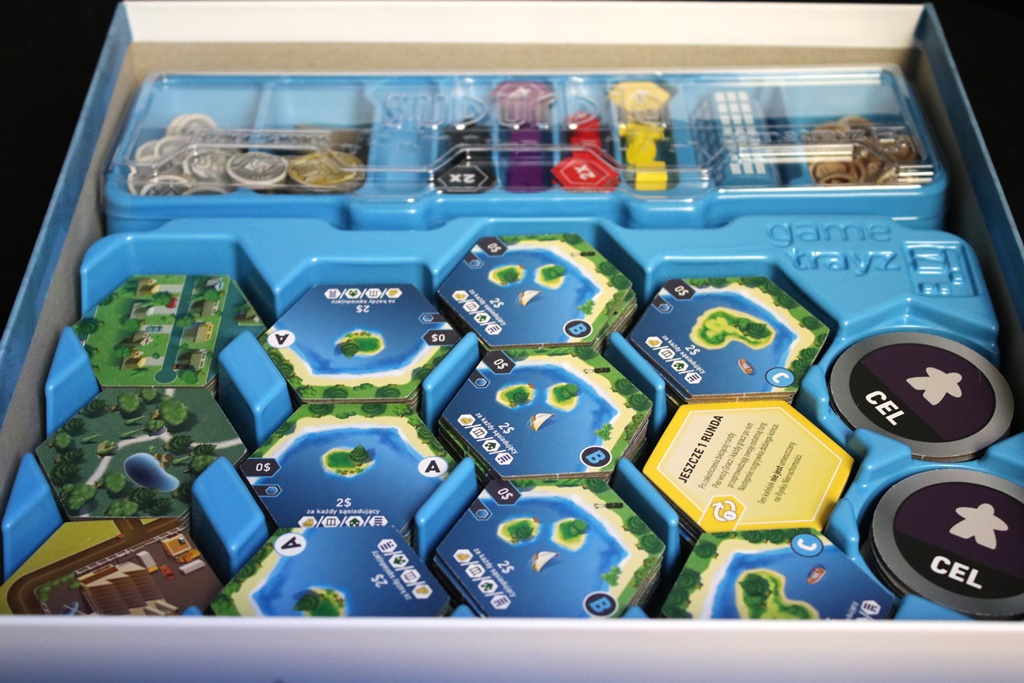
Most Victory Points are immediately visible because they are reflected in the Population Track. In addition, there are the coins that you have and your own and shared goals that may affect your winnings. The smallest number of housing (capitalist), the largest lake (harbor master) or the lowest income (scoundrel) are just some of the achievements that await us. They are placed randomly in each game, so we have to plan the district differently to be able to meet their conditions.
With each new pile, more and more expensive, but also more interesting, tiles enter the game. We have some time to get our motor started and increase the income so that we can afford it. However, on the population track, by passing the red line, we always lower both income and reputation, so we constantly have to be on guard and fight for more profits, because not developing is actually going backwards.

The replayability of the title is high due to the random order of the available buildings. Scales well with any squad, but keep in mind that in a two-player game, only one new tile will appear each turn. It didn’t bother me, because in a duo I had more control over what I managed to get into my own neighborhood.
There are two solo modes for players who like to sit alone at the table. You can try to get the highest possible score and take pride in your title (from a junior intern, through a draftsman and construction engineer to the CEO of Suburbia SA) or face a bot named Dale. Out of the two available options, I prefer to race for better badges on the diploma, because I am irritated by the random purchase of tiles by an imaginary rival and embracing his movements. Although objectively I have nothing serious to complain about such game modes, none of them can compare to the gameplay with real players.
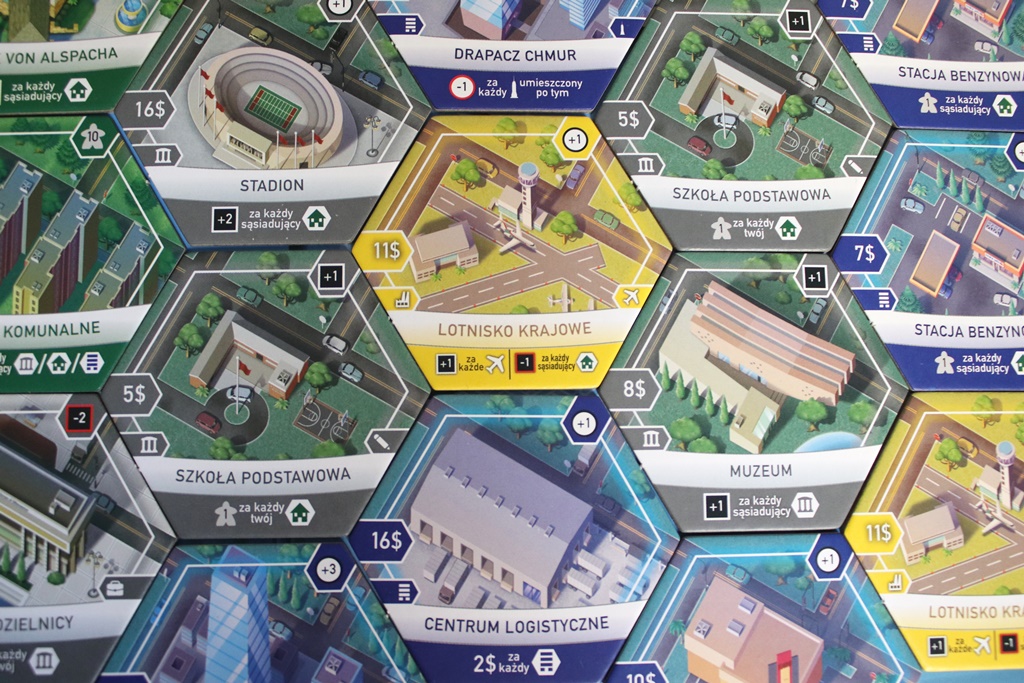
Suburbia is a surprisingly enjoyable game that will work well on the table of both less advanced players and old players. The latter, when they want to raise the level of difficulty, can obtain an additional box with several extensions, which the Portal publishing house also publishes in the Polish language version.

